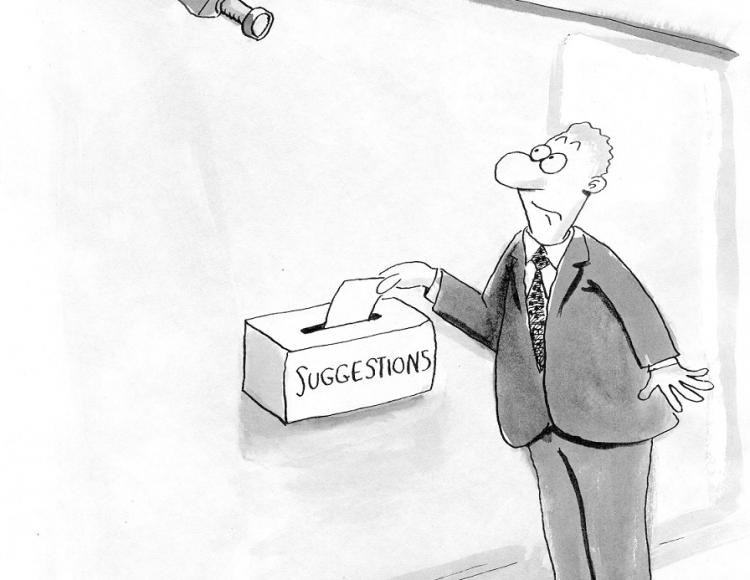- What We DoMenuMenuMenuMenu
- Who We Are
- Publications
- Testimonials
- Contact Us
Menu

What’s your biggest fear about having feedback conversations? Ah, of course. Getting an emotional reaction that crashes everything sideways.
So how can you help others be open to receiving your feedback and not get defensive, go silent, cry or get angry with you? The answer is as elusive as it is simple. The secret lies in one small word – trust. You have to gain their trust of your true intentions right at the start.
How? Well the bad news is that we humans have evolved over thousands of years to be innately expert at surviving. Our brains are hardwired to protect us. And our reptilian brains can be easily and instantly triggered to freeze or shut down in defense if we distrust someone’s intentions. It’s black and white for this part of our brain because to survive you have to be very decisive very quickly. Sabre toothed tiger? Jump into the water to save my life? Go!
And the good news? Well, because we know this, we can bypass this reaction right out of the gate instead of being oblivious to it or stepping over it. So how do we do that? How do we trigger “OK I trust you” (in their pre-frontal cortex) rather than “I don’t trust you!” (in their amygdala)? Here are five steps to safety and a great feedback conversation every time:
Prologue: Hold feedback conversations far more frequently. If people get used to receiving more feedback, their defenses will go down and they’ll expect it and be used to receiving it. If you only give feedback once or twice a year, the next feedback conversation is always the most difficult for both of you!
Step 1: Get clear in your mind about your intentions with them overall as an employee. You need to be black and white when it comes to keeping people or letting them go. If you have a poor performer, make a decision. Do you let them go or keep them? If you have to let them go, be intentional about that. If they are a keeper, be intentional about that. Be intentional about coaching and developing them and giving them feedback to learn and improve. Don’t sit on the fence because a lack of clarity in your mind will show up in your feedback.
Step 2: Make your purpose and intention for the conversation crystal clear. Show that you care about their success and want to support them. Feedback is an opportunity for people to learn how others experience them and how they are doing. It’s also a key opportunity for you to coach and develop them. Here’s an example of what to say: “Paul, I’d like to chat about the meeting this morning and how you think it went. I want to hear your thoughts and I’d like to share mine. I think there’s a great opportunity for you to gain more respect from others on the team and I want to help you because you deserve it, I care about your success and I think you can go far in this company. How does that sound?”
Step 3: Ask questions and listen to their answers. Start to ask questions early on before you talk too much. Avoid getting stuck in telling mode. A great feedback conversation is a two-way dialogue
where it’s safe and comfortable for the other person to share their perspectives on what happened. Speak what you want to happen. For example, “I want this to be very much a two way conversation Paul. I’m interested in your views and what the opportunity for you could be. I don’t want to dominate this chat and I want to make it safe and comfortable for you. How can I do that?”

Step 4: Place your feedback in the broader context of how they’re doing overall. Context is critical. It’s the big picture answer to “How am I really doing?” Feedback often doesn’t paint this and just focuses on the recency effect of performance that needs some correction. Imagine your employee’s performance as a quilt. Most of the patches are shining with skills, qualities, behavior and potential. However a few patches may need some work. Describe the full picture to let them know exactly where they stand and how big a deal this feedback conversation is. Place the conversation into that context. You’d be surprised how many people, no matter how great their performance is, come into a feedback conversation afraid they will lose their job.
For example, “Paul I think your performance is really good overall. The quality of your work is very good and you’ve been an excellent addition to the team. And (never use “but”!) I think we need to work on a couple of behaviors that are showing up and impacting the team in a way that isn’t helpful. It’s not a major issue and in my view it deserves some of your attention. And I’m here to help because I know you want to do a great job here. Do you have any questions about how big a deal this conversation is?”
Step 5: Ask more questions! (Did you forget already?) A feedback conversation is a golden opportunity ask questions and listen to their views with an open mind. We guarantee you don’t know their side of the story completely, nor their true intentions. Seek to understand their perspective before you share yours. Be willing to change your opinion based on what you hear. This creates safety for them to speak and continues to build trust and prevents their brain from shutting down and them not hearing a word your saying. For example, “Paul, I’d like to hear your thoughts about the meeting this morning. How do you think it went?” Then perhaps, “How do you think Susan felt when you made those comments about her report?”
At this point you have created enough trust and safety and the dialogue has started. You’ve prevented their brain from shifting to fight or flight and you’re on the way to a great feedback conversation. Hopefully the first of many for both of you!